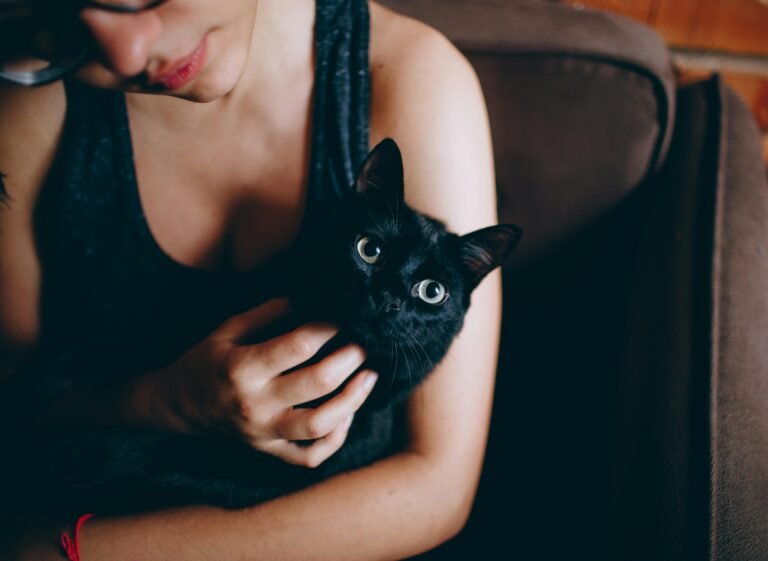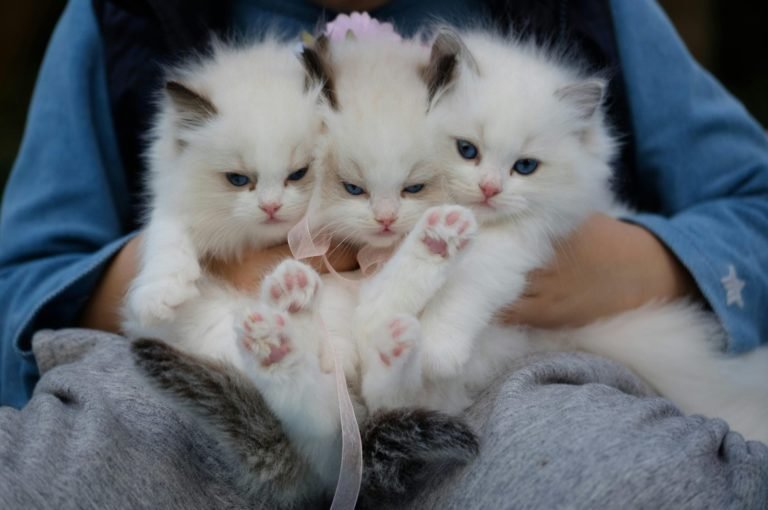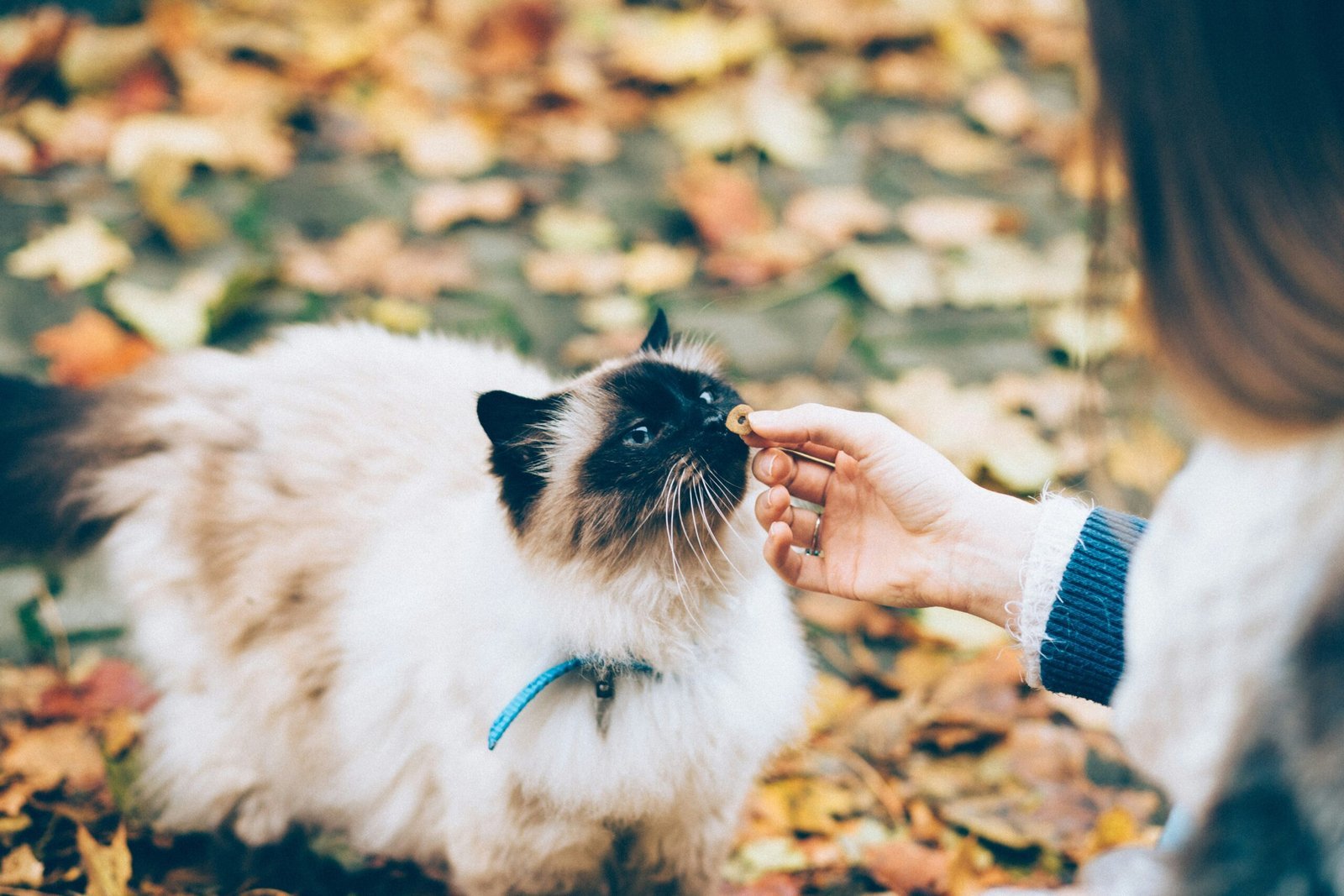
Hey there, cat lovers! Today, we’re going to talk about something super important – cat dental care.
Now, you might be thinking, “Really? Do I need to worry about my cat’s teeth?” The answer is a big yes! Just like us humans, our feline friends need good dental care to stay healthy and happy.
Let’s face it: cats can’t brush their teeth. That’s where we come in!
As pet parents, it’s our job to help keep those kitty chompers clean and strong. Good cat dental care isn’t just about fresh breath (though that’s a nice bonus). It’s about keeping your cat healthy from nose to tail.
The Basics of Cat Dental Care
So, what exactly is cat dental care?
It’s all about keeping your cat’s mouth healthy. So, you have to clean their teeth, check for problems, and get help from the vet when needed. It might sound tricky, but don’t worry! We’ll break it down into easy steps.
First things first, let’s talk about why cat dental care is so important. Just like in humans, bad teeth can lead to all sorts of problems for cats. These can include:
- Pain when eating
- Loss of appetite
- Bad breath
- Infections
- Tooth loss
Yikes! None of those sound fun, right?
That’s why good cat dental care is so crucial. By taking care of your cat’s teeth, you’re helping them live a happier, healthier life.
Signs Your Cat Might Need Dental Care

Now, how can you tell if your cat needs some dental TLC? Cats are pretty good at hiding when they’re not feeling well, but there are some signs to watch out for:
- Bad breath: If your cat’s breath smells worse than usual, it might be time for a dental check-up.
- Drooling: Cats don’t normally drool much. If you notice more drool than usual, it could be a sign of dental problems.
- Difficulty eating: Is your cat dropping food or chewing on one side of their mouth? This behavior could mean that their teeth are hurting.
- Red or swollen gums: Healthy gums should be pink, not red or puffy.
- Yellow or brown teeth: Cat teeth should be white. If they’re not, it might be time for a cleaning.
- Pawing at the mouth: If your cat keeps touching their face with their paw, they might be trying to tell you something hurts.
If you notice any of these signs, it’s time to talk to your vet about cat dental care. They can help figure out what’s wrong and how to fix it.
DIY Cat Dental Care at Home
Okay, so now we know why cat dental care is important. But how can we help our kitties at home?
Don’t worry, it’s easier than you might think! Here are some simple steps for cat dental care you can do right in your living room:
- Brushing: Yes, you can brush your cat’s teeth! It might take some practice, but many cats get used to it over time. Use a special cat toothbrush and toothpaste. Never use human toothpaste – it can make cats sick.
- Dental treats: There are special treats made to help clean cats’ teeth. They’re crunchy and help scrape off plaque as your cat chews.
- Dental toys: Some toys are made to help clean teeth while your cat plays. It’s like sneaking veggies into a kid’s food – they’re having fun and getting healthier at the same time!
- Water additives: You can add special liquids to your cat’s water that help keep their mouth clean. It’s an easy way to boost your cat dental care routine.
Regular check-ups: Look in your cat’s mouth every week or so. This check-up helps you spot problems early.
Remember, start slow with these cat dental care steps. Some cats might not like having their teeth brushed at first. Be patient and give lots of praise and treats. Over time, many cats learn to enjoy their dental care routine!
Professional Cat Dental Care

While home care is super important, sometimes our cats need a little extra help. That’s where professional cat dental care comes in. Your vet can do a thorough cleaning and check for any serious problems.
During a professional cat dental care visit, your vet might:
- Take x-rays of your cat’s teeth
- Clean above and below the gum line
- Remove any badly damaged teeth
- Check for signs of other health issues
These visits are usually done under anesthesia. So your cat will be asleep and won’t feel any pain or stress. It also lets the vet do a really thorough job.
How Often Should You Get Professional Cat Dental Care?
It depends on the cat. Some might need it every year, while others might go longer between visits. Your vet can help you figure out the best schedule for your furry friend.
Common Cat Dental Problems: A Closer Look
Even with the best cat dental care, our furry friends can sometimes run into trouble. Let’s dive deeper into these common cat dental problems. Knowing more about them can help you spot issues early and get your kitty the help they need.
1. Gingivitis
Gingivitis is like a warning light for cat dental care. It happens when the gums get angry and inflamed. You might notice red, puffy gums that bleed easily. This condition is usually caused by plaque build-up on the teeth. If you spot a red line where the teeth meet the gums, it’s time to step up your home cat dental care and see the vet. The good news is that gingivitis is often reversible with proper care!
2. Periodontitis
If gingivitis isn’t treated, it can turn into periodontitis. This condition is a more serious form of gum disease. Periodontitis is an infection that damages the tissues holding teeth in place. It can lead to loose teeth and even tooth loss. You might notice bad breath or see your cat having trouble eating. This condition can affect your cat’s overall health, which is why good cat dental care is so important. Treatment often needs professional cleaning and sometimes tooth removal. Catching and treating gingivitis early can help prevent this more serious condition.
3. Stomatitis
Stomatitis is a painful inflammation of a cat’s entire mouth. It’s less common than gingivitis but very uncomfortable for cats. You might see red, swollen tissues all over your cat’s mouth. Cats with stomatitis often drool, have bad breath, and might not want to eat because it hurts so much. We’re not sure exactly what causes it, but it might be an overreaction of the immune system or certain viruses. Stomatitis can be tough to treat, but with good vet care and home cat dental care, many cats feel much better.
4. Tooth Resorption
Tooth resorption is a strange but common problem in cats. It’s when the body starts to break down the tooth itself. Believe it or not, this affects up to half of adult cats! We’re not sure why it happens, but genetics might play a role. Cats with tooth resorption might chatter their teeth or have trouble eating. Treatment often involves removing the affected teeth. Tooth resorption can be hard to spot at home, which is why regular vet check-ups are a key part of cat dental care.
5. Teeth Breaking
Just like us, cats can break their teeth. This break often happens during play or while chewing on hard objects. The long canine teeth are often affected, but it can happen to any tooth. You might notice bleeding from the mouth, or your cat might not want to eat or play. Broken teeth are serious because they can lead to pain and infection if not treated. The vet might need to remove the tooth or do a root canal. To help prevent broken teeth, make sure your cat has safe toys and a good diet. It’s all part of good cat dental care!
Now that we know about these common problems, what signs should make us rush to the vet?
Keep an eye out for these red flags: not eating or drinking, excessive drooling, blood on toys or in the water bowl, swelling around the face, sudden bad breath, or pawing at the mouth a lot. If you see any of these signs, it’s time for a vet visit. Fast action can make a big difference in cat dental care.
The best way to deal with cat dental problems is to prevent them!
Try to brush your cat’s teeth regularly, offer dental treats and toys, feed a diet that supports dental health, get regular vet check-ups, and start dental care when your cat is young. Remember, every cat is different. What works for one might not work for another. The key is to find a cat dental care routine that works for you and your feline friend.
In the end, keeping an eye out for these common cat dental problems is a big part of being a great pet parent. With some knowledge and care, you can help keep your cat’s smile bright and healthy for years to come!
Cat Dental Care and Diet
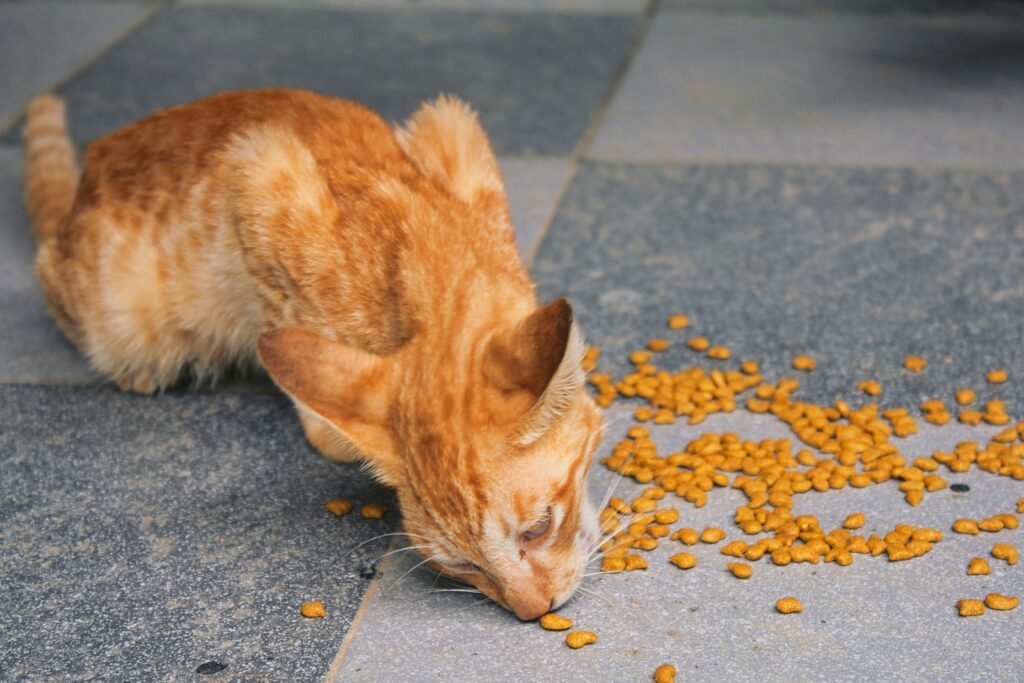
Did you know that what your cat eats can affect their teeth? It’s true! Diet plays a big role in cat dental care. Here are some tips:
- Dry food: Crunchy kibble can help clean teeth as your cat chews. It’s like nature’s toothbrush!
- Wet food: While not as good for teeth, wet food is important for other reasons. Many cats need a mix of wet and dry food for the best health.
- Dental diets: There are special cat foods made to help clean teeth. Ask your vet if these might be good for your cat.
- Treats: Look for dental treats that vets approve. These can be a tasty way to boost your cat dental care routine.
- Avoid human food: Many human foods are bad for cats’ teeth (and overall health). Stick to cat food for the best dental care.
Remember, every cat is different. What works for one might not work for another. Talk to your vet about the best diet for your cat’s dental health.
Myths About Cat Dental Care
There are a lot of myths out there about cat dental care. Let’s bust a few:
Myth: There is no need for cat dental care
Truth: Cats absolutely need dental care! Just like us, they can get cavities and gum disease.
Myth: Bad breath in cats is normal.
Truth: While cat breath isn’t usually minty fresh, really bad breath can be a sign of dental problems.
Myth: Cats won’t let you brush their teeth.
Truth: Many cats can learn to enjoy tooth brushing with patience and practice.
Myth: Cat dental problems only affect old cats.
Truth: Cats of any age can have dental issues. Even kittens need good dental care!
Myth: If my cat is eating, their teeth must be fine.
Truth: Cats are good at hiding pain. They might keep eating even if their teeth hurt.
Don’t let these myths stop you from giving your cat the dental care they need!
Cat Dental Care for Different Life Stages
Just like people, cats’ dental needs change as they grow. Let’s look at cat dental care for different ages:
Cat Dental Care for Kittens (0-6 months):
- Kittens lose their baby teeth around 3-4 months old.
- Start getting them used to having their mouth touched.
- Ask your vet when to start brushing.
Cat Dental Care for Young Adults (6 months – 2 years):
- Start a regular brushing routine.
- Introduce dental treats and toys.
- Have your vet check their teeth at every visit.
Cat Dental Care for Adults (2-10 years):
- Keep up with daily brushing.
- Watch for signs of dental problems.
- Consider professional cleanings as needed.
Cat Dental Care for Seniors (10+ years):
- Continue daily care.
- Be extra watchful for dental issues.
- More frequent vet check-ups may be needed.
Remember, these are just guidelines. Your vet can give you specific advice for your cat’s dental care needs.
Tools for Cat Dental Care
To keep your cat’s teeth healthy, you’ll need some special tools. Here’s a list of cat dental care must-haves:
- Cat toothbrushes: These are smaller and softer than human toothbrushes.
- Cat toothpaste: Never use human toothpaste! Cat toothpaste comes in yummy flavors like chicken or fish.
- Dental wipes: These are good for cats who won’t let you use a brush.
- Dental treats: Look for ones approved by vets.
- Water additives: These help clean teeth all day long.
- Dental toys: Chew toys can help keep teeth clean.
- Dental diet food: Ask your vet if this is right for your cat.
You don’t need all of these, but having a few can really help your cat dental care routine.
When to See a Vet for Cat Dental Care
While home care is great, sometimes you need to call in the pros. Here are some times when you should see a vet for cat dental care:
- Bad breath that doesn’t go away
- Bleeding or swollen gums
- Difficulty eating or loss of appetite
- Drooling more than usual
- Broken or loose teeth
- Any growths in the mouth
- Your cat won’t let you touch their mouth
It’s time for their regular check-up
Remember, it’s always better to be safe than sorry when it comes to cat dental care. If you’re worried, give your vet a call.
Making Cat Dental Care Fun
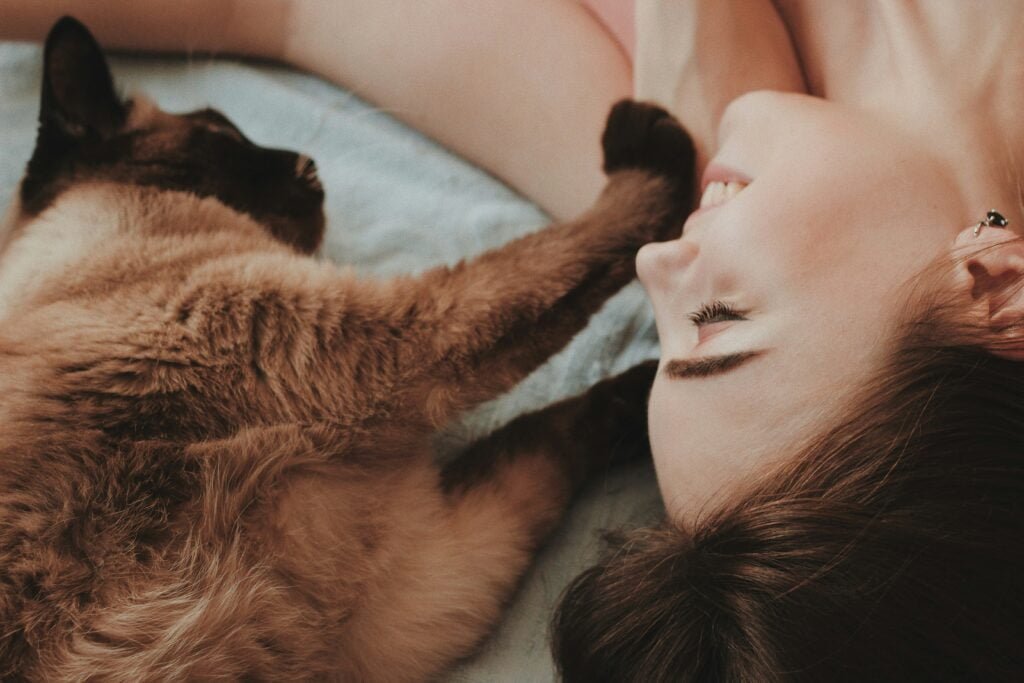
Let’s face it: some cats aren’t thrilled about dental care. But with a little creativity, you can make it fun! Here are some ideas:
- Turn brushing into a game. Use the brush like a toy at first.
- Give lots of praise and pets during and after brushing.
- Try different flavors of toothpaste to find your cat’s favorite.
- Make a routine. Brush at the same time each day, maybe before a meal.
- Start slow. Just touching your cat’s mouth is a good first step.
- Use dental toys for playtime. It’s fun and good for their teeth!
- Give a small treat after dental care time.
Remember, patience is key. It might take time, but many cats learn to enjoy their dental care routine.
Wrapping Up: The Importance of Cat Dental Care
Whew! We’ve covered a lot about cat dental care. Let’s recap the main points:
Remember, every cat is different. What works for one might not work for another. The most important thing is to start a cat dental care routine and stick with it. Your furry friend will thank you with a healthy smile and lots of purrs!
So, are you ready to become a cat dental care champion? Your kitty is counting on you! With a little effort and lots of love, you can help keep your cat’s teeth healthy for years to come. Now go smile at your cat – and maybe a toothbrush!

